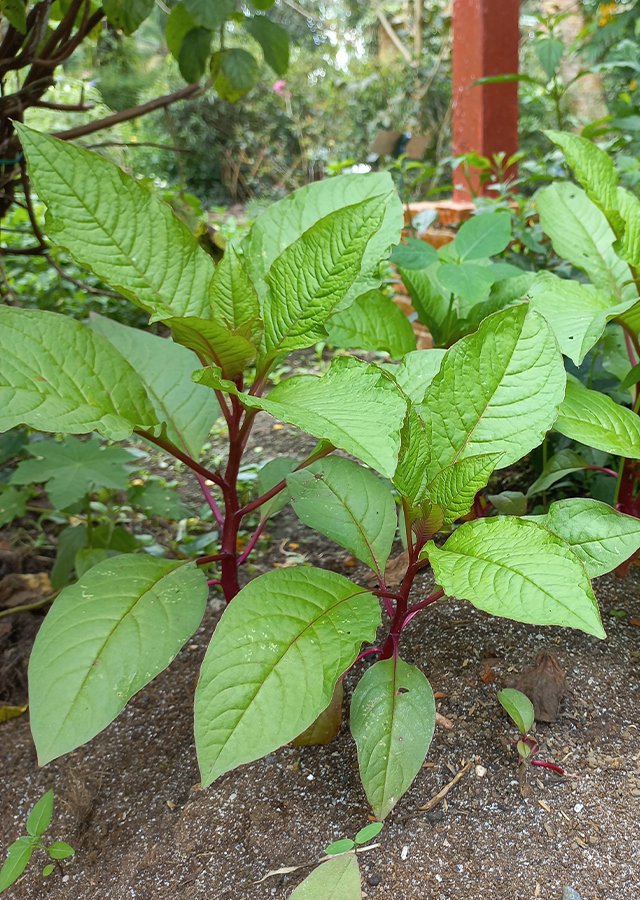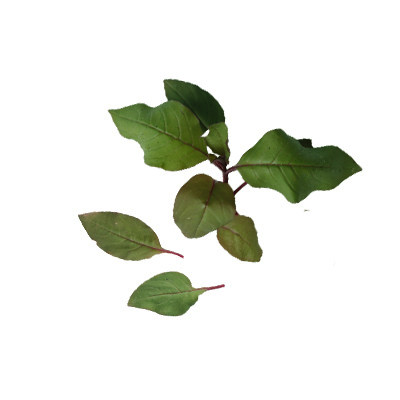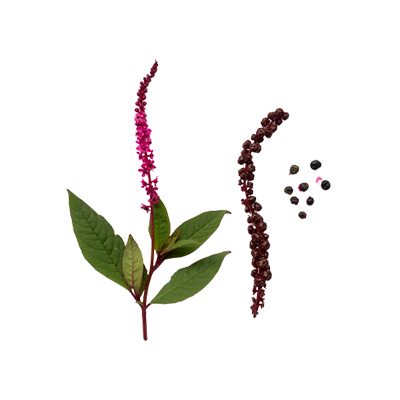Pokeweed
Phytolacca americana L.
Phytolaccaceae
Location in our garden
Principal



Synonym
Phytolacca americana var. lancifolia H.Walter
Phytolacca decandra L.
Phytolacca vulgaris Crantz
Habitus
Herbaceous. Climbing or scrambling, semi-succulent, reddish herb up to 3.5 m tall.
Part Used
Leaves
Fruit
Roots
Growing Requirements
Full Sunshine
Need Shade
Habitat
Riverbanks
Forest
Roadside
Grassland
Terrestrial
Overview
Phytolacca americana originates from southern and eastern North America and Mexico and has been introduced into South America, Europe, Africa and Asia. It is harvested from the wild for local use as a food, medicine and source of materials. A red ink and a dye are obtained from the fruit, though it is not very permanent. Young pokeweed leaves and berries may be eaten as food, but only after being cooked properly by boiling in several changes of water. Only the young leaves should be used since they become toxic with age.
Vernacular Names
Phytolaque (French), Capa rosa (Portuguese).
Agroecology
Phytolacca americana occurs in sunny anthropogenic localities, such as disturbed forest, forest margins, roadsides, river banks, fallow land and waste places from sea level to 1.400 metres. It prefers humus-rich and acidic soil in well-drained to moist habitats. It tolerates short periods of drought.
Morphology
- Reddish stem.
- Roots - fleshy taproot.
- Leaves - alternate, simple and entire; stipules absent; petiole 2 - 6 cm long; blade lanceolate to elliptical or ovate, 14 - 22 cm × 6 - 12 cm, base rounded, often asymmetrical, apex acute.
- Flowers - bisexual, regular, 5-merous, sweet-scented; pedicel up to 12 mm long, pink; sepals 2 mm long, rounded, whitish to pinkish.
- Fruit - consists of fused 1-seeded berries, smooth or sometimes ribbed, up to 6 - 8(-10) mm in diameter, ripening purplish black.
- Seeds - kidney-shaped, laterally flattened, 3 - 4 mm long.
Cultivation
- Generative propagationis by seed - Grow the plants on in the seedbed for their first year.
- Vegetative propagation is by division, making sure that each section has at least one growth bud. Very easy, larger divisions can be planted out direct into their permanent positions. We have found that it is better to pot up the smaller divisions and grow them on in light shade in a cold frame until they are well established before planting them out.
Chemical Constituents
The leaves, fruits and roots: saponins (triterpenoid glycosides: phytolaccosides and esculentosides), lectins.
Roots: α-Spinasterol , histamine and γ-aminobutyric acid.
Fruit: red pigmen phytolaccanin (betanine).
Stem and roots: phytolaccosides.
Seed: neolignans.
Traditional Medicinal Uses
- In Réunion and Mauritius, the powdered roots are applied to haemorrhoids. The crushed roots in alcohol are externally applied to rheumatic pains. The fruits and aerial parts have emetic and intestinal worm-expelling properties.
- In South Africa, the root extract is taken to treat lung diseases. All plant parts, but especially the roots, are poisonous when taken fresh and in quantity.
- In the United States and Europe, different plant parts are widely used to treat haemorrhoids, rheumatism, inflammations, skin diseases including skin parasites and cancer, general pain (fruit, roots), swellings, wounds and ulcers (leaves). The root extract is taken as an abortifacient and to treat sore throat and tonsillitis. The powdered roots are applied in a poultice to treat cancer. The fruit and seed extract is taken as a purgative, emetic, and to treat venereal diseases, scurvy and snakebites.
- Studies have showed antihepatotoxic, antigalactagogic, antimutagen, and anti-inflammatory properties.
- The root is alterative, anodyne, anti-inflammatory, cathartic, expectorant, hypnotic, narcotic and purgative.
Part Used
Reference Sources
- Aweke, G. (2007). Phytolacca americana L. In: Schmelzer, G.H. & Gurib-Fakim, A. (Editors). PROTA (Plant Resources of Tropical Africa / Ressources végétales de l’Afrique tropicale). https://uses.plantnet-project.org/en/Phytolacca_americana_(PROTA). 25-10-2021.
- Drugs.com. (2021). Pokeweed. https://www.drugs.com/npp/pokeweed.html. 25-10-2021.
- Fern, Ken. (2016). Useful Temperate Plants: Phytolacca americana L. http://temperate.theferns.info/plant/Phytolacca+americana. 25-10-2021.


